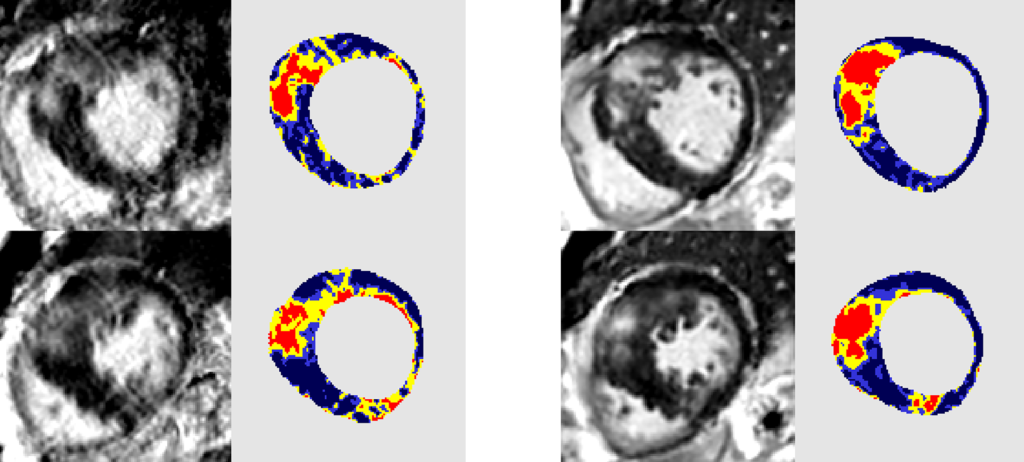A team from Oxford comprising artificial intelligence (AI) scientists, magnetic resonance specialists and cardiologists have developed a new cardiac magnetic resonance (CMR) scan for detecting heart muscle disease.

The current ‘gold standard’ for imaging heart muscle disease is CMR, using a method called late gadolinium enhancement. This requires injection of a contrast agent into the patient, which prolongs the scan, increases the cost and is more risky in some patients, such as those with severe kidney failure.
Having a faster scan that provides the same information, but without the need for needles and contrast agents would be very attractive to patients and the doctors who need these scans.
The team at the Oxford Centre for Clinical Magnetic Resonance Research (OCMR), who are supported by the NIHR Oxford Biomedical Research Centre, has developed an AI solution called ‘virtual native enhancement’. This combines MR images that do not normally need contrast injections, and uses AI to train machines to predict what a contrast-enhanced image would look like.
The OCMR is based at Oxford’s John Radcliffe Hospital.
This approach can produce images that are similar to traditional contrast-enhanced images, but without the need to inject the contrast dye.
The results, published in the high-impact medical journal Circulation, show that these AI-enhanced images can produce images that are as clear or better quality than the traditional contrast-enhanced images, providing doctors with the same information.
This technique also does not need the expensive contrast agents, syringes and needles, and is therefore much faster and significantly cheaper than the conventional scans.
With further development and testing on more heart conditions, it could lead to a next generation of CMR scans that are clearer, cheaper, safer, needle-free and more patient-friendly.
Dr Qiang Zhang, AI scientist at OCMR and lead author on the study, said “We are excited by our concept of virtual native enhancement, where AI could serve as a virtual contrast dye to replace intravenous contrast dye. We aim to develop deep learning solutions at the frontier of clinical research for immediate patient benefit.”
Prof Stefan Piechnik, senior author and Head of Advanced Cardiovascular Image Processing at OCMR, said “The technique uses T1-mapping, a quantitative imaging of the heart. T1 mapping has been on forefront of cardiac imaging research for a number of years now, yet the standardisation and interpretation aspects have always been challenging for frontline doctors.
“This invention is a crucial stepping stone to the widespread use of CMR as a completely non-invasive scan, which retains all the image features that doctors have already become accustomed to through many years of practice.”
Prof Vanessa Ferreira, joint senior author, OCMR deputy clinical director and Oxford BRC Senior Fellow, said “This new AI technology is a game changer for cardiac imaging. It is one big step closer to making cardiac MRI more accessible to patients and hospitals alike, not only for the NHS, but also more widely throughout the world. This may include lower to middle income countries due to the lower cost and shorter scan time for greater through-put.”
Another co-author, Prof Stefan Neubauer, Director of the OCMR, Head of Division of Cardiovascular Medicine and the Oxford BRC’s Imaging Theme Lead, said “This is clearly an exciting development coming out of OCMR, and is expected to advance the field of CMR. The success of this technology continues a long legacy of effective inter-disciplinary collaboration that aims to bring high-impact, cutting-edge research from bench to bedside.”
This work was undertaken in collaboration with researchers from University of Virginia, USA, Harvard Medical School and the Hypertrophic Cardiomyopathy Registry (HCMR) study investigators. As well as the Oxford BRC, the study was funded by the British Heart Foundation and the University of Oxford John Fell Fund.